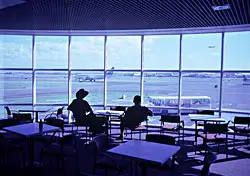
Over the past two weeks, Corporate America has been reporting its financial results for the year’s third quarter, the July through September period. For the airlines and their stockholders, the numbers look good.
A few representative examples:
American posted a net profit of $175 million for the third quarter of 2007, “Our sixth straight profitable quarter and our largest net profit in any third quarter since 2000,” according to Chairman and CEO Gerard Arpey. Excluding a special charge of $12 million for pilot pension plan settlement charges, Continental recorded net income of $253 million, up 73% over the same period last year. United had pre-tax income, excluding special items, of $498 million, 127% higher than the same period last year. And US Airways reported profit for the third quarter of $177 million, compared to a net loss of $78 million for last year’s third quarter.
While investors may be heartened by the quarterly reports’ strong data, flyers shouldn’t be. Among the numbers released were the airlines’ load factors (the percentage of seats occupied on an average flight). And as were profits, load factors were sky-high.
American’s load factor for the quarter, for instance, was a record 83.9%, compared to 81.7% in the third quarter of 2006. Continental’s load factor was 84.3%, up from 82.7 in 2006. United’s mainline service ran 84.7% full, compared with 83.6% last year. And US Airways’ load factor for the quarter was 83.4%, versus 79.1% for the same period last year. For those who fly, those numbers translate as “full.” Uncomfortably full. Claustrophobically full. Let’s-just-stay-home full.
In fact, from the standpoint of air travelers, load factors are a misery index: the higher the load factor, the more miserable the in-flight experience is likely to be. And as the latest quarterly figures attest, high load factors go hand-in-hand with high profits.
Which brings up a fundamental quandary faced by the industry, and experienced first-hand by the airlines’ customers. Under their current business model, the airlines’ financial success correlates with the discomfort of their customers.
Lucky for consumers, and for free market economics generally, that quirky relationship in an anomaly.
Apple can sell a zillion iPhones without affecting the experience of the next iPhone customer. Even the hotel industry, which shares many elements in common with the airline business, can sell all its available rooms without unduly degrading the comfort of its guests.
But when it comes to flying, the interests of the airlines and their customers are misaligned, if not diametrically opposed.
This fundamental disconnect, which I hereby christen the flyers’ dilemma, presents a problem which airline managers have yet to acknowledge, much less address. Until they do, flyers who place a premium on comfort should sell their airline stock and hope the airlines’ financial fortunes turn negative.
We hand-pick everything we recommend and select items through testing and reviews. Some products are sent to us free of charge with no incentive to offer a favorable review. We offer our unbiased opinions and do not accept compensation to review products. All items are in stock and prices are accurate at the time of publication. If you buy something through our links, we may earn a commission.
Related
Top Fares From
Today's Top Travel Deals
Brought to you by ShermansTravel
Kenya: 14-Night Tour, Incl. Tanzania &...
smarTours
 vacation
$7125+
vacation
$7125+
7-Night Caribbean Round-Trip Cruise From Orlando:...
Norwegian Cruise Line
 cruise
$739+
cruise
$739+
Ohio: Daily Car Rentals from Cincinnati
85OFF.com
 Car Rental
$19+
Car Rental
$19+



